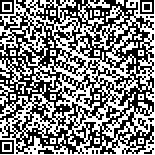| 摘要: |
| 海洋中的氮循环是海洋生物地球化学研究的热点领域之一,而硝化过程是氮循环的关键一环,准确获取硝化速率对于丰富海洋氮循环的认识至关重要。15N标记同位素技术是目前国际上最为广泛使用的硝化速率测定方法,该方法的核心在于准确测定15N加富样品产生的15NO-2和15NO3-的含量,但目前的方法普遍存在测试时间较长、测试成本较高、所需样品体积较大或者检测限较高等问题。研究以低成本的膜进样质谱作为15N加富样品测试设备,建立了基于镉柱与氨基磺酸双还原体系测定15N加富样品中15NO3-含量的方法。经条件优化实验确定的具体方法:采用1mol/L HCl配制15mmol/L的氨基磺酸(SA)作为反应试剂除去样品原有的NO-2,然后利用镉柱将15NO3-还原为15NO-2,再按照1︰60(V︰V)的比例加入SA将15NO-2还原为29N2,最终被膜进样质谱检测。此方法可以测定的15NO3-样品浓度范围为0~40μmol/L,其精密度为0.3%(10μmol/L),并具备成本低、测定快速(3 min/样品)、样品消耗体积小、检测限低(0.05μmol/L)且无显著的盐效应等特点。利用该方法测得青岛石老人0~10cm砂质沉积物中15NH4+和15NO-2的潜在氧化速率分别为0.08~0.17nmol N/(cm3·h)和0.53~1.56nmol N/(cm3·h),验证了研究所建立的方法适用于沉积物中硝化速率的测定。 |
| 关键词: sup>15N加富样品 硝化 氨基磺酸 膜进样质谱 |
| DOI:10.11693/hyhz20211000237 |
| 分类号:P734 |
| 基金项目:国家自然科学基金,U1806211号,42076035号,41606093号;中国海洋大学中央高校基本科研业务,202072001号。 |
附件 |
|
| DETERMINATION OF 15NO-3 IN 15N-ENRICHED WATER SAMPLES BASED ON DOUBLE REDUCTION SYSTEM IN MEMBRANE INJECTION MASS SPECTROMETRY |
|
LUO Chang1,2,3, SONG Guo-Dong1,2, LIU Su-Mei1,2
|
|
1.Frontiers Science Center of Deep Ocean Multispheres and Earth System/Key Laboratory of Marine Chemistry Theory and Technology, Ministry of Education, Ocean University of China, Qingdao 266100, China;2.Laboratory for Marine Ecology and Environmental Science, Pilot National Laboratory for Marine Science and Technology (Qingdao), Qingdao 266237, China;3.College of Chemistry and Chemical Engineering, Ocean University of China, Qingdao 266100, China
|
| Abstract: |
| The nitrogen cycle in the ocean is one of the hot fields of marine biogeochemistry, and nitrification process is a key part of the nitrogen cycle. Accurate acquisition of nitrification rate is very important to understand marine nitrogen cycle. The15N labeled isotope technique is currently the most widely used method for determining the rate of nitrification in the world. The core of the method is to accurately determine the concentrations of 15NO-2 and/or 15NO3- in the 15N-enriched sample. However, the current methods generally have problems of long test time, high cost, large sample volume, and high detection limit. A robust and fast method was developed to determine the 15NO3- concentration in the 15N-enriched sample with the double reduction system of cadmium column reduction and sulfamic acid (SA). All the 15NO3- is converted to 29N2 and the 29N2 can be easily measured by membrane injection mass spectrometer (MIMS) with low cost and small volume. The specific method determined by the condition optimization experiment is: first, the 15 mmol/L SA (dissolved in 1 mol/L HCl) as the reaction reagent remove the original 15NO-2, 15NO3- is reduced by a cadmium column, and the 15 mmol/L SA (dissolved in 1 mol/L HCl) is added to the solution with a reagent: sample =1 : 60 (V/V). The produced 29N2 can be measured by MIMS, and the original concentration of 15NO3- can be derived from the signal of 29N2. The method has a detection limit of 0.05μmol/L for 15NO3-, a linear range of 0~40μmol/L, and a precision of 0.3% (at 10μmol/L), with no salt effect. The potential oxidation rates of 15NO+4 and 15NO2- in the 0-10 cm layer of the sandy sediment of Qingdao Shilaoren were 0.08~0.17 nmol N/(cm3·h) and 0.53~1.56 nmol N/(cm3·h) with the method, respectively. The established method in this study can be applied to determine the potential rate of nitrification in sediments. |
| Key words: 15N enriched sample nitrification sulfamic acid membrane injection mass spectrometry |
